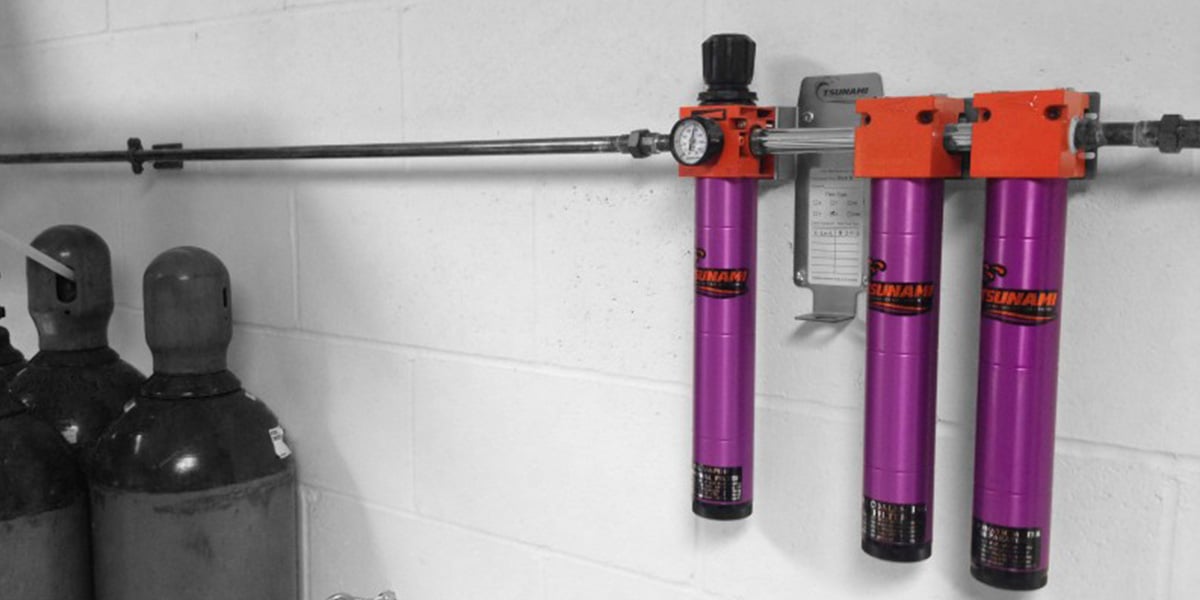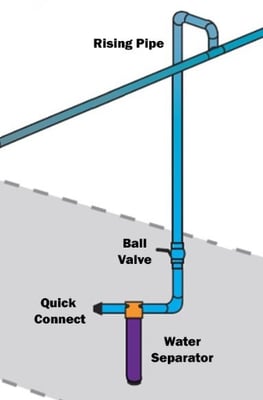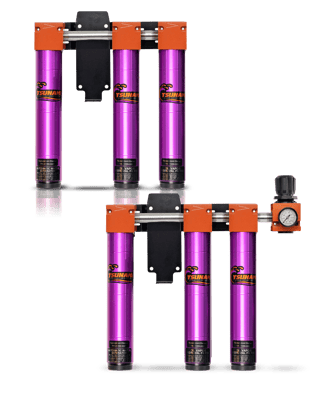3 min read
The Rule of 20: Unlocking Efficiency in Compressed Air Systems
Tara E
:
Jul 27, 2023 8:45:00 AM

Ever wondered why there's dew on the grass on summer mornings?
Or why your cold, refreshing can of soda appears to sweat after pulling it out of the cooler?
OR why the bathroom mirror is foggy when you get out of the shower??
That's simple, it's the Rule of 20!
The Rule of 20: Defined
The Rule of 20 states that for every 20°F air is cooled, it loses 50% of it's ability to hold moisture.
Meaning, 50% of the humidity in the air will condense for every 20°F the air temperature drops.
It explains why condensation occurs in the examples listed above:
- In summer, warmer daytime air holds moisture as humidity. Making the weather conditions hot and "sticky". As the air temperature cools overnight, the ambient air loses it's ability to hold moisture and drops it to the ground; creating a very wet ground that is sure to soak your socks if you don't put shoes on. Yuck.
- The cold can of soda you took out of the cooler is not sweating, it's condensing the ambient air! Once the water vapor in the air hits the cool surface of the can, the vapor transforms into drops of water.
- If you're a hot showerer (is that a word?), you'll see a very foggy mirror when you pull open the curtain. The steam rolling off the shower condenses onto the cooler surface of the mirror.
How the Rule of 20 Applies to Compressed Air
Air exiting an air compressor is HOT. When air is compressed, it experiences a rapid increase in pressure and a decrease in volume; raising the temperature of the air significantly (the scientific term for this is called an "adiabatic process" in case you were wondering).
As the hot air travels through the air lines it will begin to cool and condense any humidity it may have been carrying.
For every 20°F the air cools, 50% of the humidity will drop and form into liquid water droplets inside the air lines.
Here's a video I made with Brad a few years ago to help explain:
Although most air compressors come with a cooling mechanism to cool and condense the air before it enters the air stream, it is important to consider the Rule of 20 for downstream equipment and tools.
Consider this: Air that is 100°F at the compressor might cool to 80° in the after cooler, then drop another 10-20°F in the air pipes; creating liquid water down stream.
Without drip legs, drains and filters, the newly condensed liquids will damage equipment at the point-of-use.
Unlock Your Air Systems Efficiency in 5 Simple Steps
Thanks to the innovative world we live in, there are a few simple inventions to remove liquids as they condense.
For all you non-readers out there, here's a video summing up this next section:
1. Install an Automatic Drain onto Your Air Compressor
Water and oils will accumulate at the bottom of your air tank overtime. If not properly drained by an automatic tank drain, your air system will experience a major loss in efficiency, interior corrosion and potential carry-over into the air line.
 Automatic Electronic Drain Valve by Tsunami Compressed Air Solutions
Automatic Electronic Drain Valve by Tsunami Compressed Air Solutions
2. Cool the Air Exiting the Compressor
The hot air exiting the air compressor needs to be cooled immediately. Many air compressors do come with a built-in cooling system (aftercooler, intercooler, etc.), however, make sure yours is sufficient enough; or invest in a high temperature refrigerated air dryer.
3. Use Drip Legs with Automatic Drains
Drip legs allow gravity to do the work for you. The liquids trapped in the air line will drop down the pipe and exit the air line (if an auto drain is installed).
4. Riser Pipes!
 Diagram showing a riser pipe installed before the air connection
Diagram showing a riser pipe installed before the air connection
For air drops, utilizing effective "riser" piping will prevent liquids from reaching the equipment. It is recommended to install a 5-6" riser pipe upwards from the main pipe, before plumbing down to the point-of-use.
5. Install Additional Filtration at the Point-of-Use
Any remains of contamination found at the point-of-use needs to be removed by an air filter or, depending on the required air quality, an air dryer. It is pertinent to understand your air systems requirements before purchasing a piece of equipment.
 3-Stage Filter Packages by Tsunami Compressed Air Solutions
3-Stage Filter Packages by Tsunami Compressed Air Solutions
Air filter packages will remove the bulk liquids, oils and contaminants while an air dryer will pull any remaining humidity that has not yet condensed.
My Tip: Skip the cheap, lower-quality air filters and invest in a premium air treatment solution. Your shop's success depends on it!

